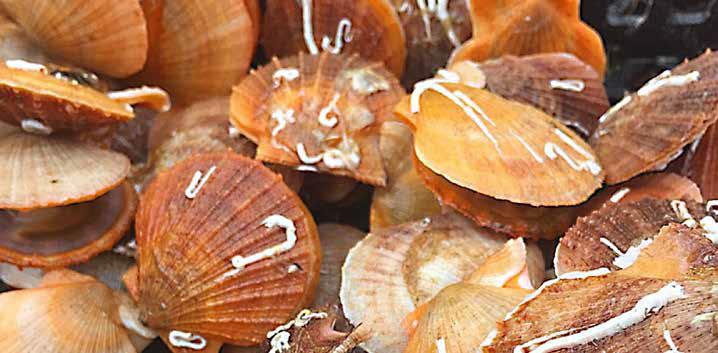
Triploids, tetraploids, and successful metamorphosis in Purple hinge rock scallop (Crassadoma gigantean)
In collaboration with commercial shellfish growers in the WRAC region, a project was initiated to investigate the feasibility of purple hinge rock scallop culture - a particularly high-value seafood. The study primarily focused on understanding the growth patterns, survival characteristics, optimal husbandry methodologies, and the stage at which this marine species attains sexual maturity.
To comprehensively address these critical queries, grow-out trials were performed across diverse environments within Washington State. This strategic endeavor not only illuminated our understanding about maturity timings of cultivated stocks but also enriched our knowledge about the production of sterile rock scallops. This is crucial to protect wild populations from potential cross-breeding with farmed scallops.
Our findings demonstrate a sizeable variation in scallop growth across various sites, indicating that a marketable scalp may be obtainable in as short as three years -- although it's noteworthy that most specimens at that age are male with minimal gonadal development. While there have been challenges in conditioning these scallops to attain sexual maturity within hatcheries, this has slightly hampered further research on the generation of sterile stocks through ploidy manipulation.
Nonetheless, this study has significantly amplified our grasp over the performance characteristics of rock scallops under commercial settings. Pertinent information regarding growth rate, survivorship, and cementation behavior across seven distinct locales is now readily accessible for shellfish companies - fostering their abilities to make sound decisions about further commercially exploiting this species. Moreover, valuable insights drawn from our study on gametogenesis and sex ratios can assist state and tribal wild resource management agencies in predicting the possibilities of cross-breeding between farmed and wild scallops.
OBJECTIVES:
- (low risk) Produce sufficient chemical 3Ns to enable a) growout trials at 4 sites, and b) future tetraploid induction trials that require oocytes from mature triploid females
- (high risk) Conduct 4N induction trials following the French patent method and the gynogenetic method, both of which require only mature diploid broodstock. Develop 4N containment.
- (low risk) Run a series of settlement experiments to describe factors that influence successful settlement and metamorphosis to the juvenile feeding stage.
- (low risk). Continue research on survival, growth and cementation behavior of rock scallops currently deployed at 8 sites in Puget Sound and one in California.
- The primary outreach objective is the production of a WRAC
Project Summary
| Duration: | 4 years |
|---|---|
| Funded Date: | 09/01/2012 |
| Funding level: | $357,269 |
| PI: |
|
| Advisors: | |
| Location: | California - CA, Washington - WA |
| Species: | Rock Scallop |
| Topics: | Culture, Grow out, Hatchery, Ploidy/polyploidy |
